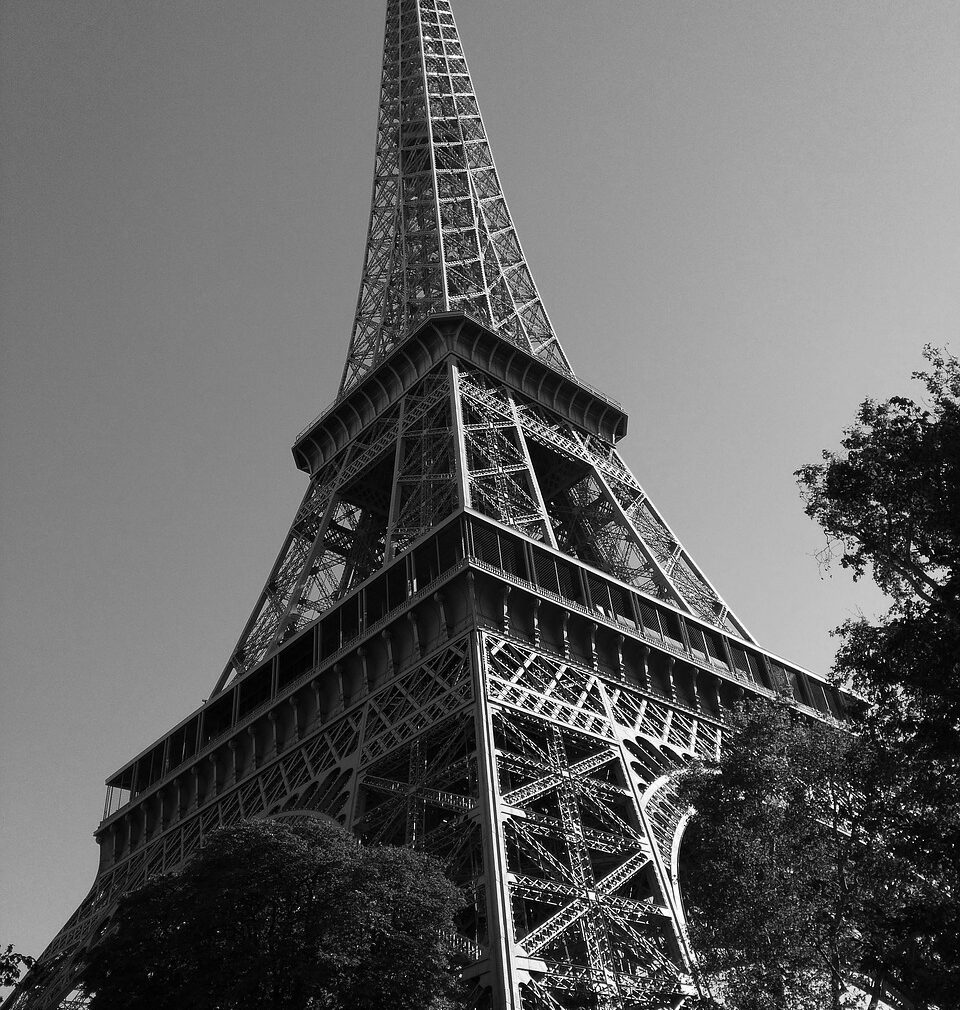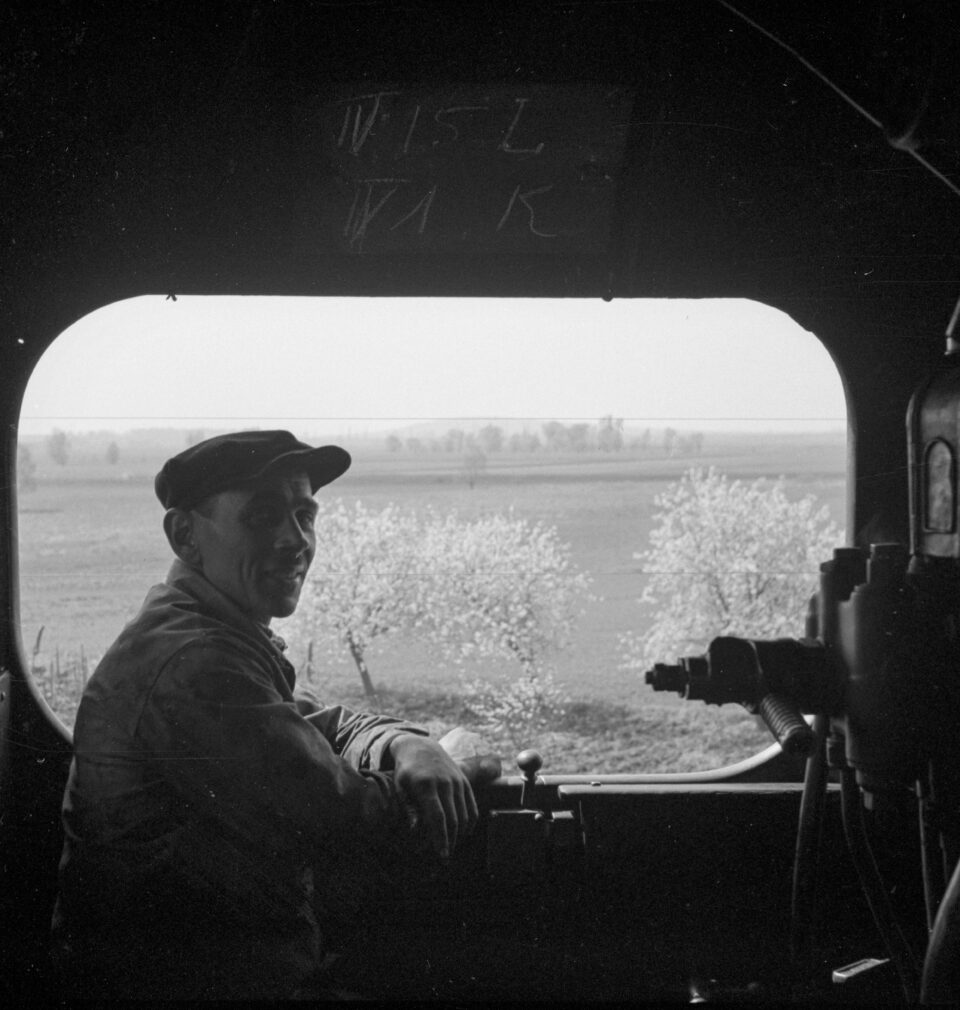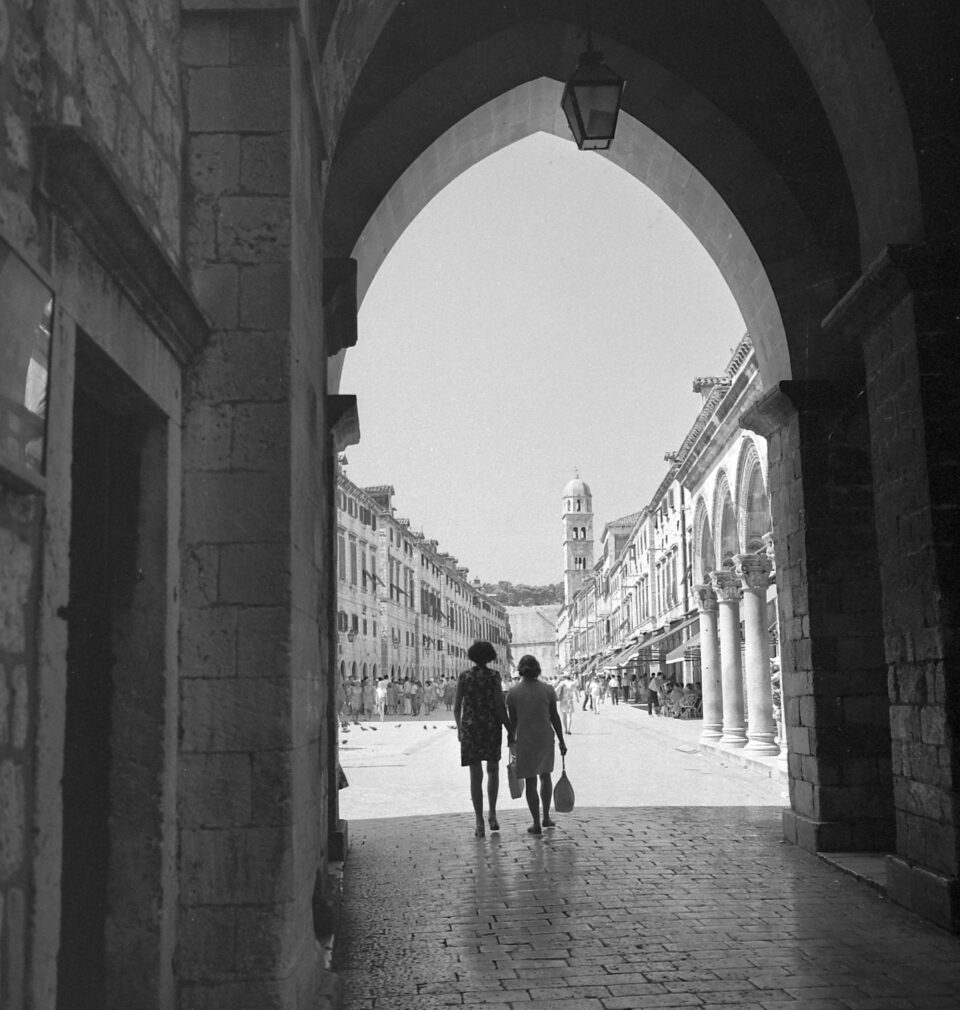
Croatia in Europe
Silence Over 6 Mètres Avant Paris
Publication: 14 October 2021
TAGS FOR THE ARTICLE
TO THE LIST OF ARTICLESEustachy Kossakowski, 6 metrów przed Paryżem / 6 metres avant Paris, Editions Nous, Caen 2012
Eustachy Kossakowski’s photographic project 6 mètres avant Paris, taken in France in the summer of 1971, proved a resounding success. Out of the blue, this unknown photographer from Poland, a recent immigrant still in the process of having his residence visa extended, was given a one-man show at the Musée des Arts Decoratifs (Pavillon Marsan, Musée du Louvre) which subsequently toured several European galleries, among them ones as prestigious as Moderna Meseet in Stockholm. It should be stressed here that Kossakowski was a recognisable figure back in Poland; he had not only worked for illustrated magazines such as the weekly Stolica and later the monthly Polska, but had also documented exhibitions and opening ceremonies in Warsaw galleries, and made portraits of artists, writers, composers, musicians, as well as the avant-garde artists at Foksal Gallery and their projects; in a word, he was the photographer of choice for celebrities of the world of culture (as we would say today) and was to an extent a celebrity of the same ilk himself.
The idea for the series 6 mètres avant Paris apparently came to him by chance. According to Anka Ptaszkowska, while out with her on one of their strolls, Kossakowski, on seeing yet another road sign bearing the name of the French capital, commented that “perhaps it would be worth photographing”. This then gave rise first to a hunt for another sign, and subsequently to the whole rigmarole of systematically hunting down roadsigns saying “Paris” and photographing them. At this point we need to mention the peculiar nature of the topography of this city. Only its central core, within the ring formed by the Boulevard péripherique, the motorway bypass (which is at a virtual standstill throughout the day, of course), is Paris proper. The districts abutting the bypass around its external edge are part of “Greater Paris”, but are not nominally in Paris. Yet the urban space, its form and the nature of its built fabric essentially give no clue as to the point at which the suburbs become the city. This information is, of course, conveyed by signs saying “Paris”, whose positioning sometimes seem to be absurd. Happily, Kossakowski perceived this absurdity and processed it into one of the best and most important documentary projects by a Pole.
As the name of the series suggests, Kossakowski stood six metres in front of each of the 159 signs he found, set up the shot with the road sign in the centre of the frame, and took the photograph. His almost instantly recognisable method of working (a glance at any few photographs from the project, in any order, tells all), the way he builds his frames, and the unmistakeable word “Paris” lend this undertaking a visual cohesiveness. The generally anonymous, eye-achingly banal, nondescript urban landscapes that surround the photographed signs, cluttered with cars parked willy-nilly, is essentially familiar to us from contemporary Polish cities… Yet the album by Eustachy Kossakowski (published in the autumn of 2012 by Nous and available in Polish photographic bookstores), which comprises the full set of photographs from the series 6 mètres avant Paris, has to date, not received a single critical commentary. The same happened with the exhibition accompanying the publication, which went on display first at the Berlin Freies Museum, and subsequently at the Arton Foundation gallery in the SOHO Factory in Warsaw.
Why the silence? we might ask. The retrospective show of Kossakowski’s photographs at Warsaw’s Zachęta Gallery in 2004 was certainly not passed over in silence – it received fairly broad commentary. Granted, a lot of the publicity was created by the fading and yellowing of the baryte prints on display (caused by the use of the wrong materials to frame the works). The Warsaw show included a considerable number of photographs from the series 6 mètres avant Paris, which must have whetted the appetites of its audience for more of the images with the “Paris” sign in centre shot. Yet now that, eight years on, “more” has come, and we have at last been presented with the full set of photographs from the project (this time reproduced from scanned and digitally edited negatives) in a beautiful album publication, nobody seems to have anything to say about them. Undoubtedly its author himself is to some degree responsible; he treats his Paris project as a kind of visual joke, and refers to it in interviews as “photo reportage”. In the retrospective at the Zachęta mentioned above, it was also clear that Kossakowski makes no particular effort to develop the method he adopted for this project, while subsequent similar ones, such as his series of photographs of barricades around building sites in Paris (the cycle Palissades, 1972–1977) or of broken telegraph poles (the series Broken poles, Warsaw-Białystok, 1999), are weaker in their impact. This is due on the one hand to the lesser semantic potential of the themes he selects in these cases, and on the other to their rather inconsistent presentation.
No discussion of 6 mètres avant Paris would be worthwhile without a reference to the many portraits of Paris made since the invention by Niépce and Daguerre of the method of photographicimage registration. A comparison of the photographs of its historic buildings taken in the mid-19th century as part of Mission Héliographique, the somewhat later “administrative views” made during Haussmann’s remodelling of the city, Atget’s documentation, created over nearly four decades, Brassai’s nocturnes, and the street shots of Cartier-Bresson and Kertész (to name but the most famous and popular views of the city on the Seine), points out just how different and innovative Kossakowski’s angle and work was. His approach is, of course, characterised by a considerable dose of the irony and sarcasm of the new immigrant, uncertain as to whether his residence visa will be renewed, and using shanks’s pony as the cheapest way to get around the city. The Paris photographed by Kossakowski in 1971, at the time still bathed in the aura of “cultural capital of the world”, reveals its other, intensely banal face.
But let us return to the method of working adopted by the photographer of 6 mètres avant Paris. If we juxtapose his photographs with those shown at William Jenkins’ famous, influential exhibition New Topographics: Photographs of a Man-Altered Landscape, which included works by artists including Robert Adams, Lewis Baltz, Bernd and Hilla Becher, Frank Gohlke, and Stephen Shore, we see a remarkable parallel in the selection of motifs and style of presentation of an urbanised landscape. Jenkins’ exhibition, however, went on show at the Museum of Photography at the George Eastman House in January 1975, nearly four years after 6 mètres avant Paris at the Musée des Arts Decoratifs. Guided by his own visual intuition, probably honed by his observations of the conceptual activities of artists at the Foksal Gallery (whose projects he documented before he left Poland), and his obviously rebellious attitude towards the popular concept of “artistic” images, Kossakowski chose as his mode of presentation of the theme “Paris” a verism that might invite association with the Dadaist ready-mades of the 1920s, or the related serigraphs of three decades later depicting an ambulance crash or (with no particular difference) a can of tomato soup.
For a long time the New Topographics exhibition did not attract the reception it deserved in Poland, but in recent years the situation has begun to change and local projects have emerged that attempt to present our own urbanised landscape in a “new topographic” way. Without a doubt, one expression of this trend is the two issues of the low-budget photographic almanac Normalizm edited by Jan Rogała. Paradoxically, however, these home-grown initiatives make more reference to what we might call “aesthetic characteristics” (although this expression contradicts the programmatic non-style of the new topography as declared by Jenkins in his text written as commissioner of the exhibition) than to a visual verism of conceptualist, Pop Art or Dadaist provenance.
This “aesthetic” or “aestheticising” approach was also in evidence at the exhibition New Documentalists at the Centre for Contemporary Art Ujazdowski Castle in 2006. After that show (curated by Adam Mazur), which was intended (and succeeded) as a presentation of the marked “documental shift” in Polish photography, this approach was strengthened further still. Possibly the best expression of this is the work of the Sputnik Photos collective and the notion of “magical realism” used by commentators to describe their activities. And perhaps this is our answer to the silence of the photography critics (who are on the whole enraptured by the Sputniks) surrounding Eustachy Kossakowski’s album 6 mètres avant Paris and the display of all 159 photographs in the series at the Arton Foundation seat in the SOHO Factory in Warsaw.
Copyright © Herito 2020



